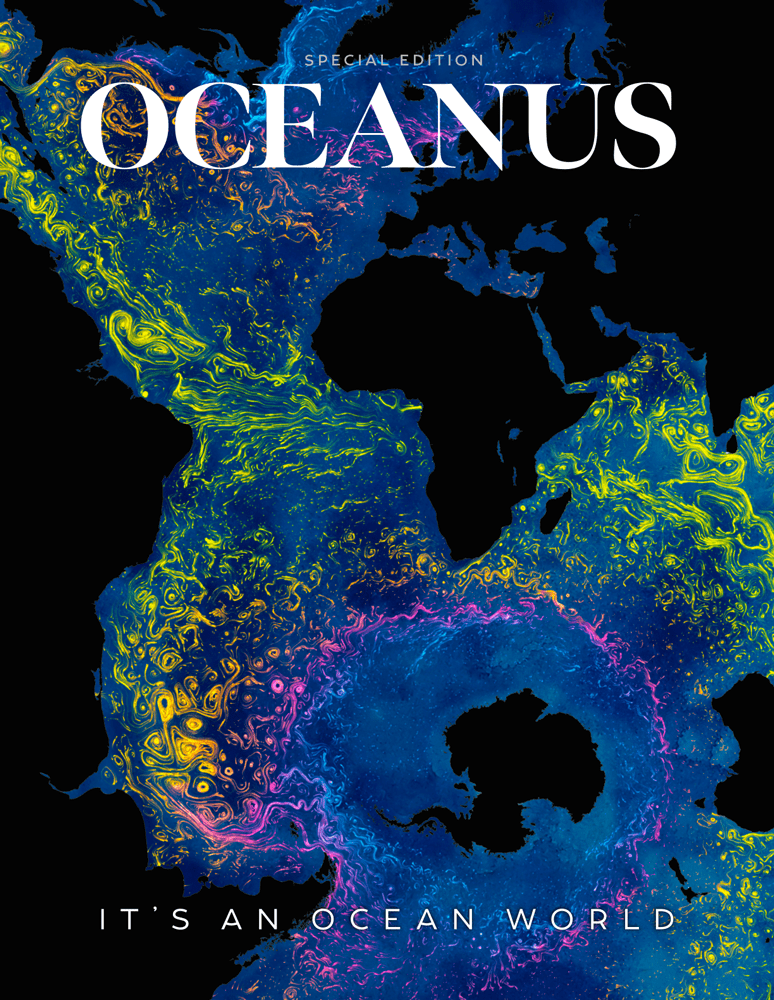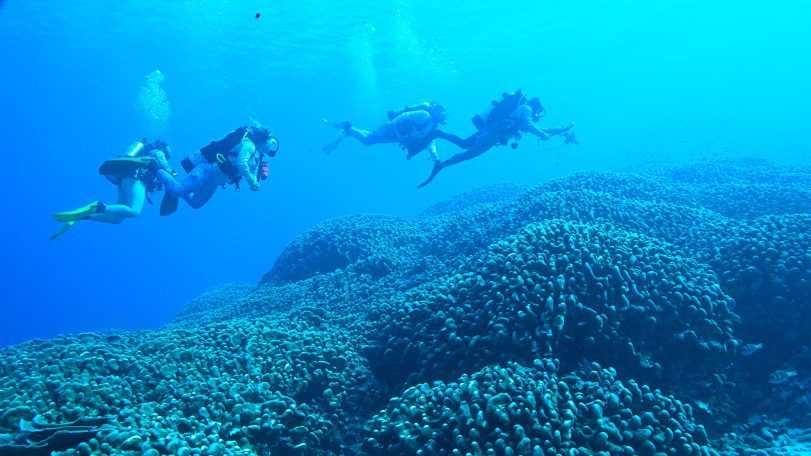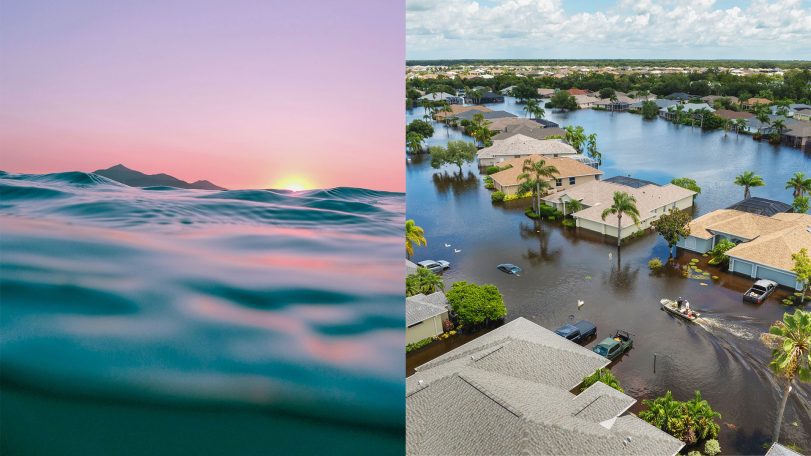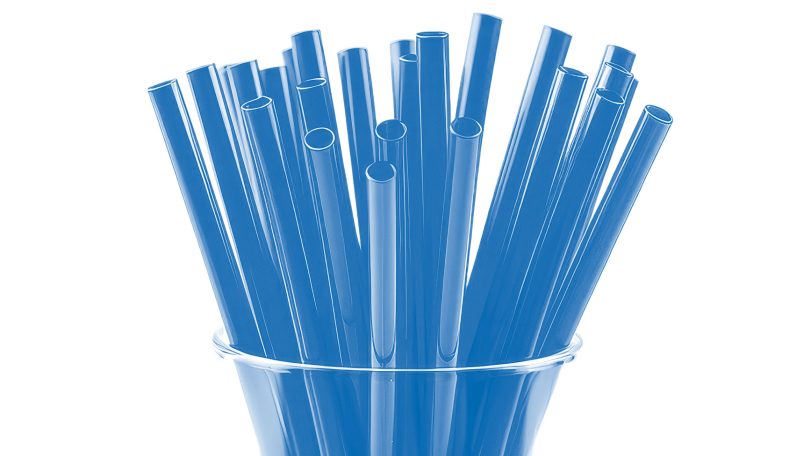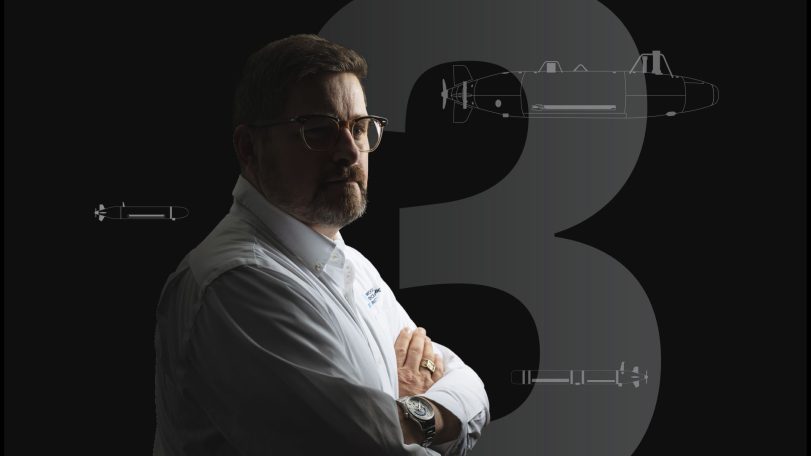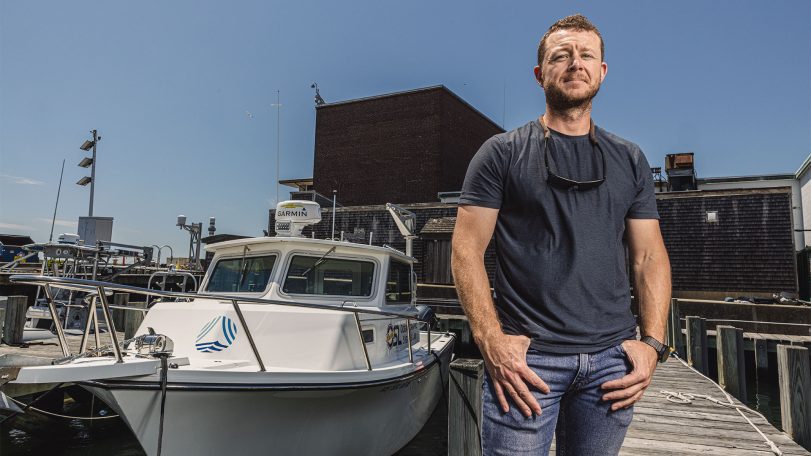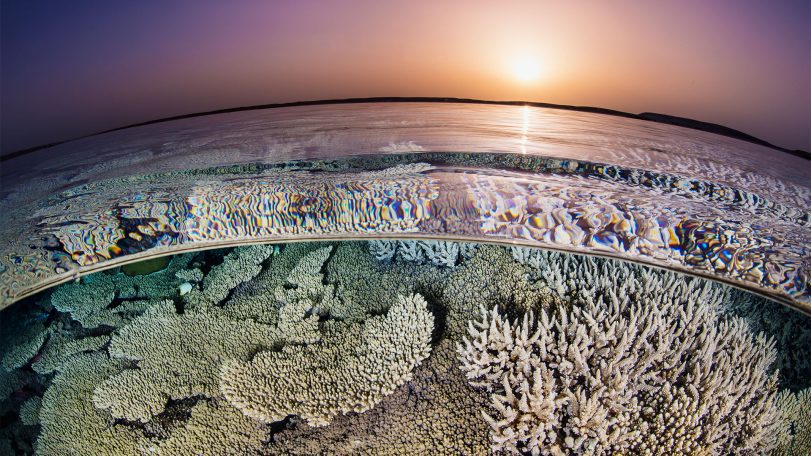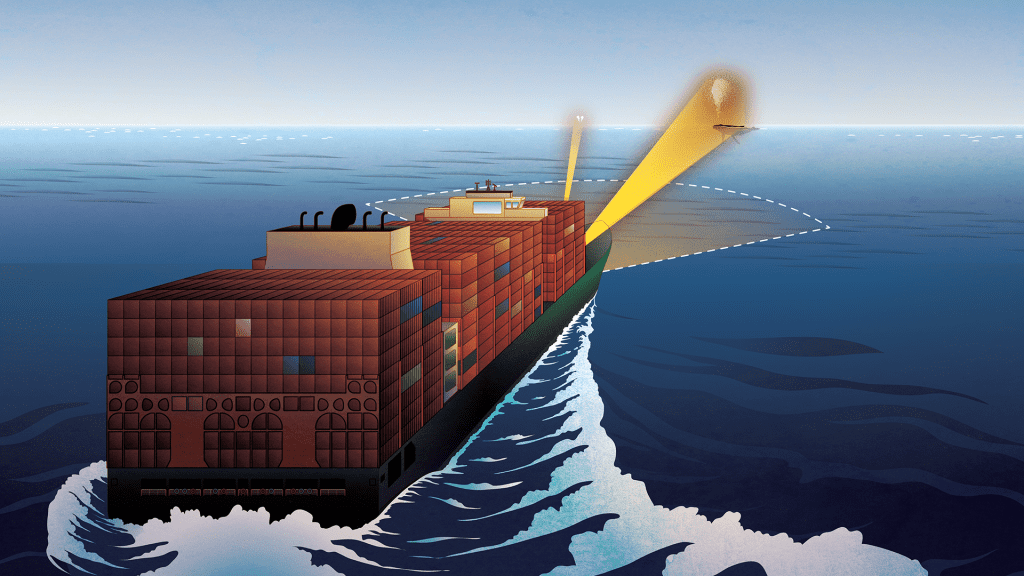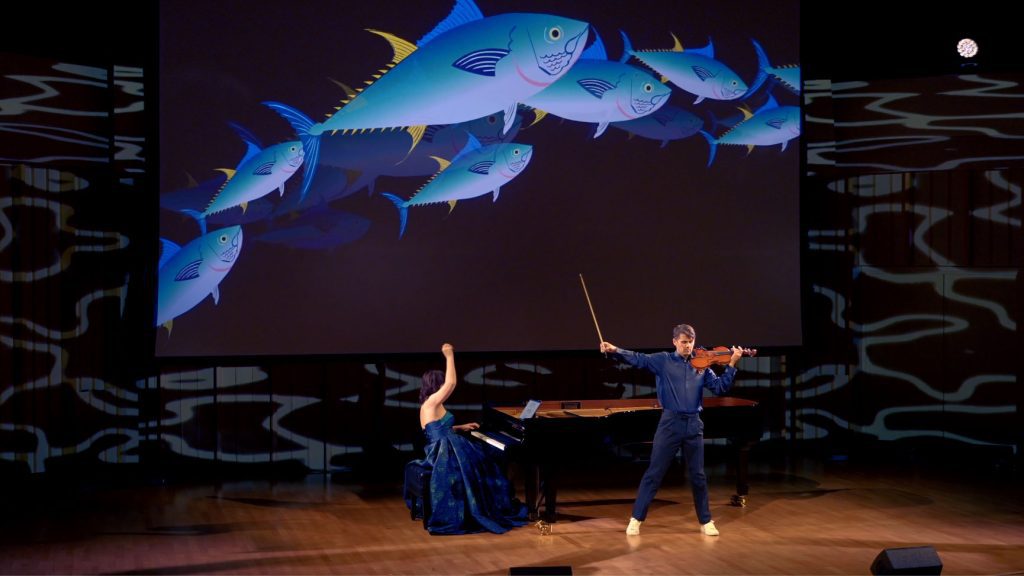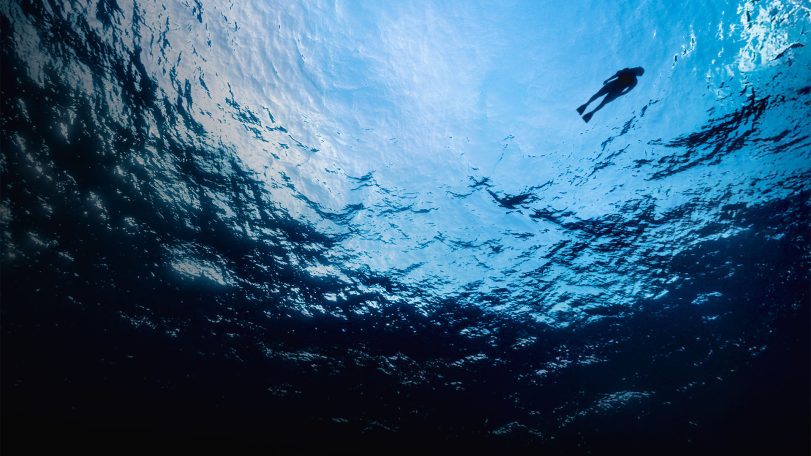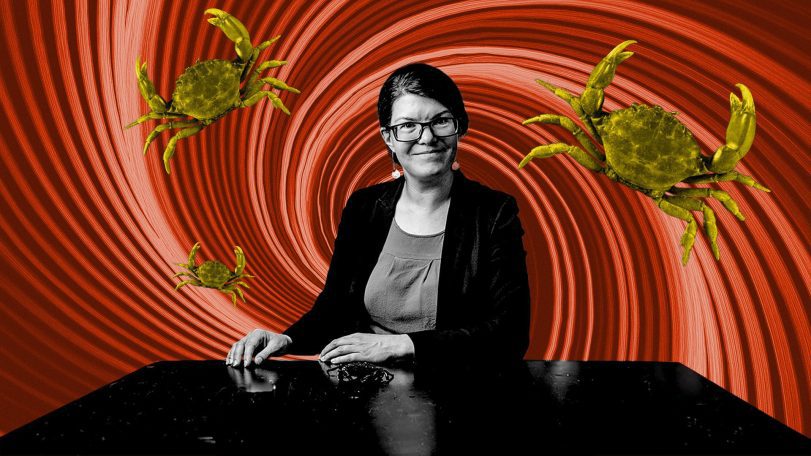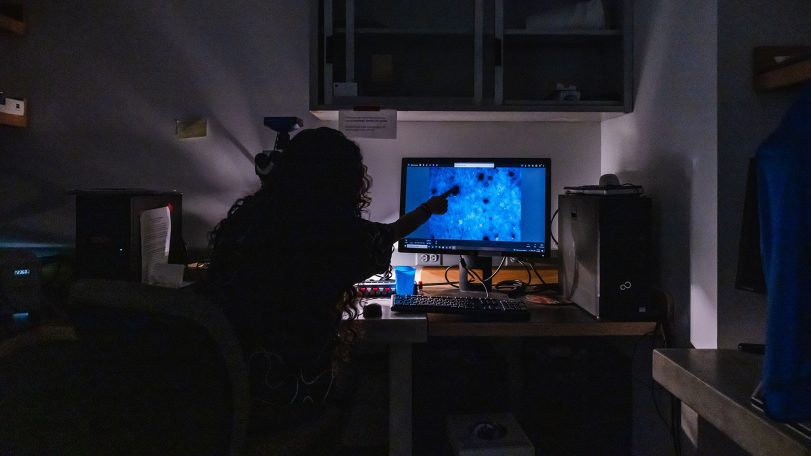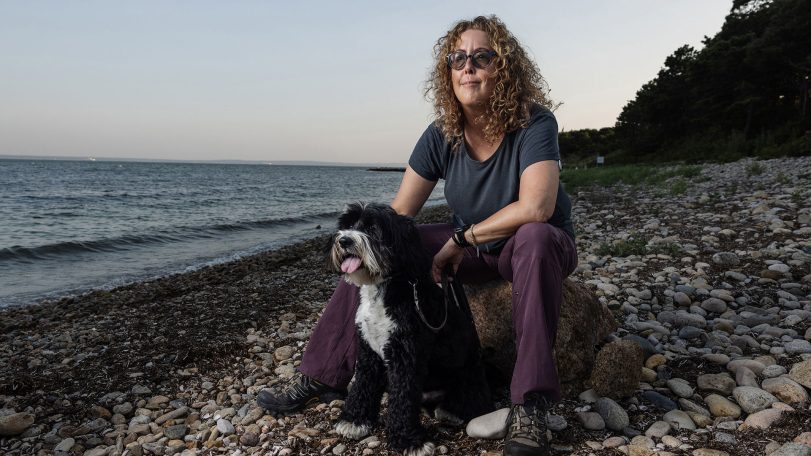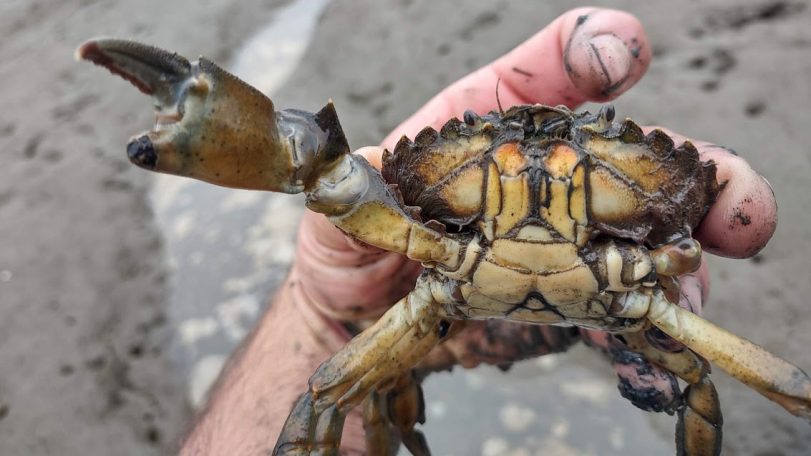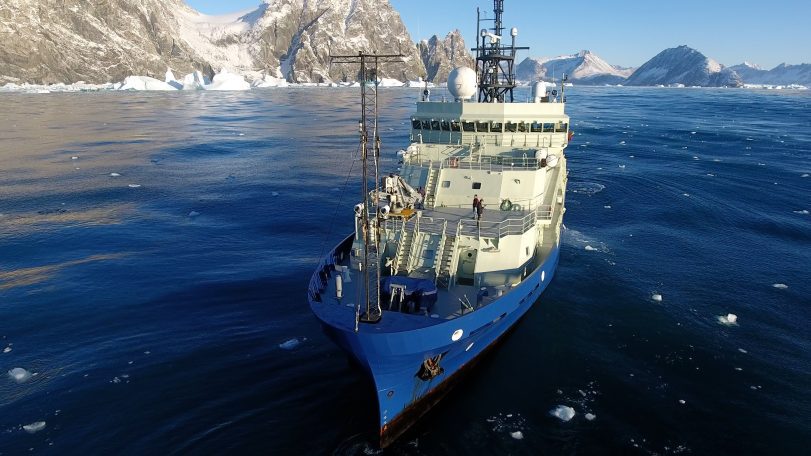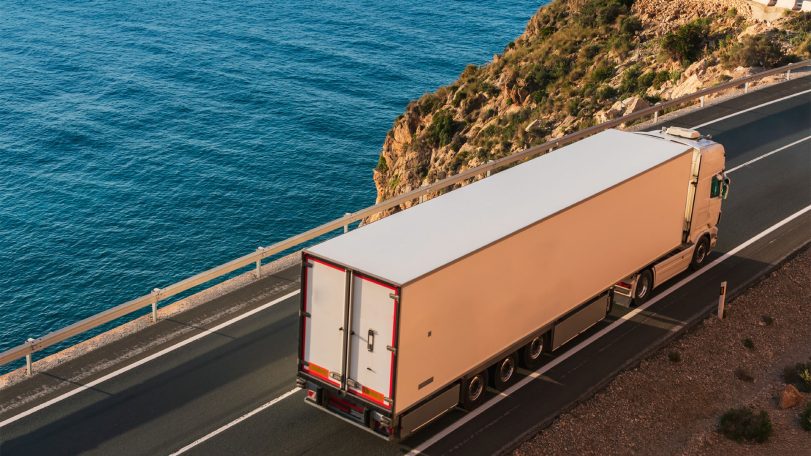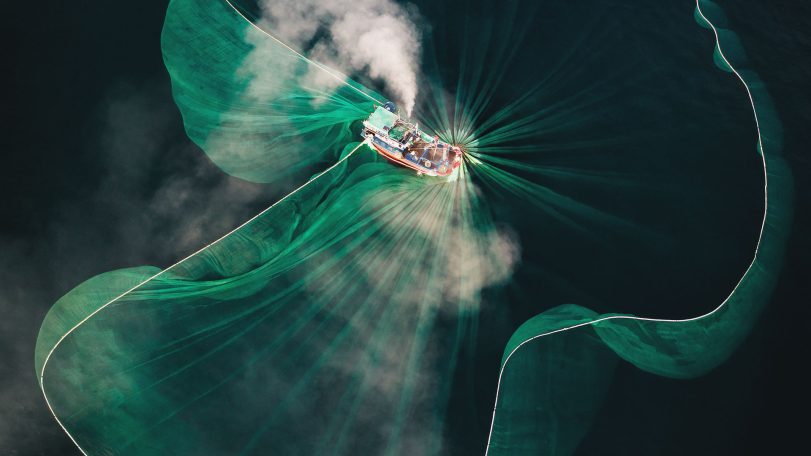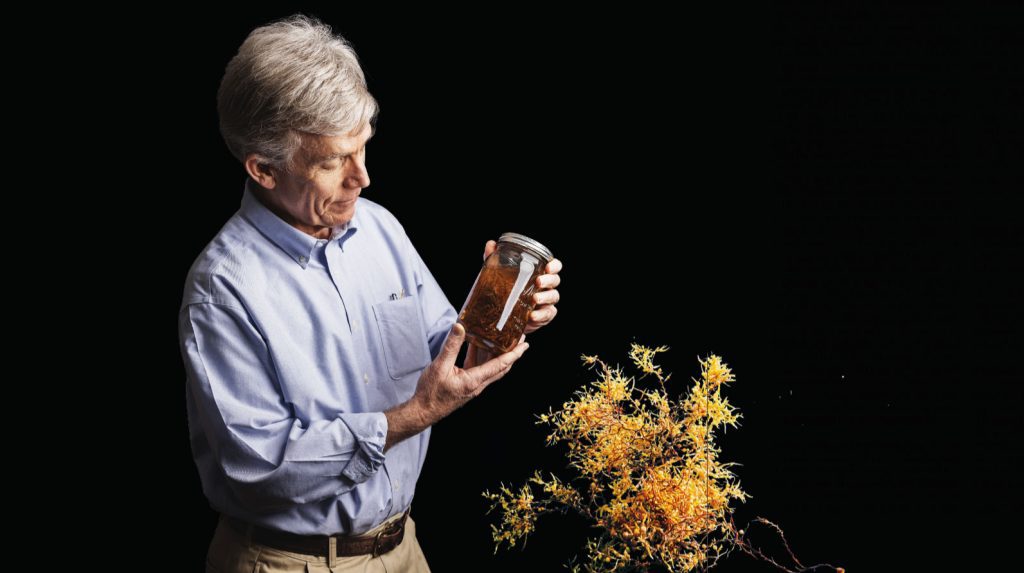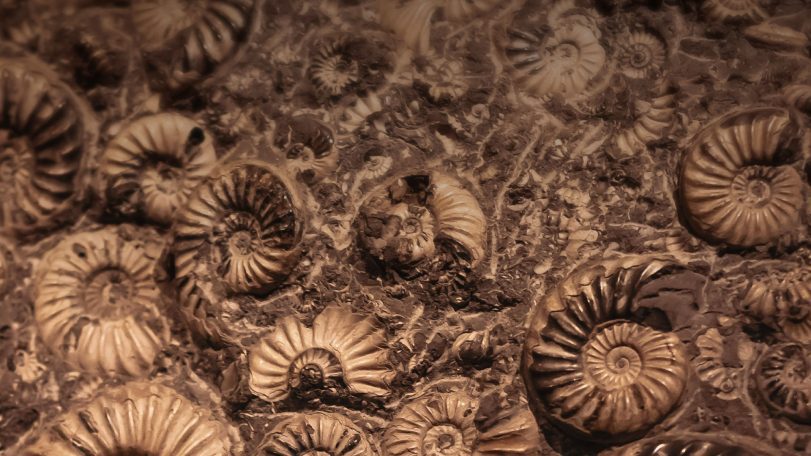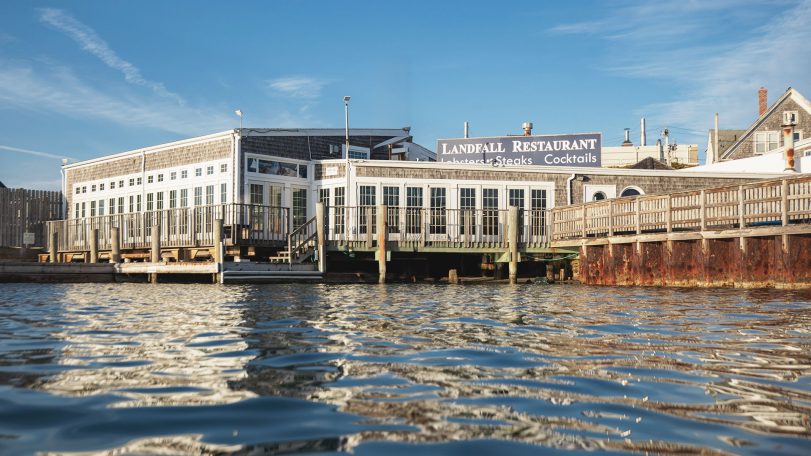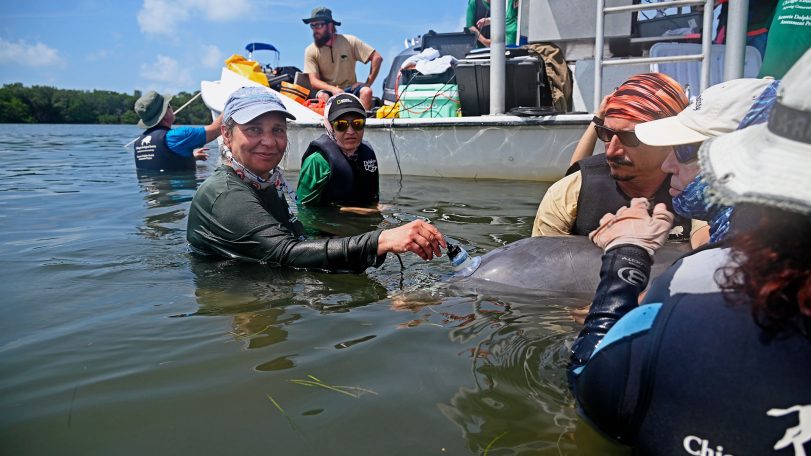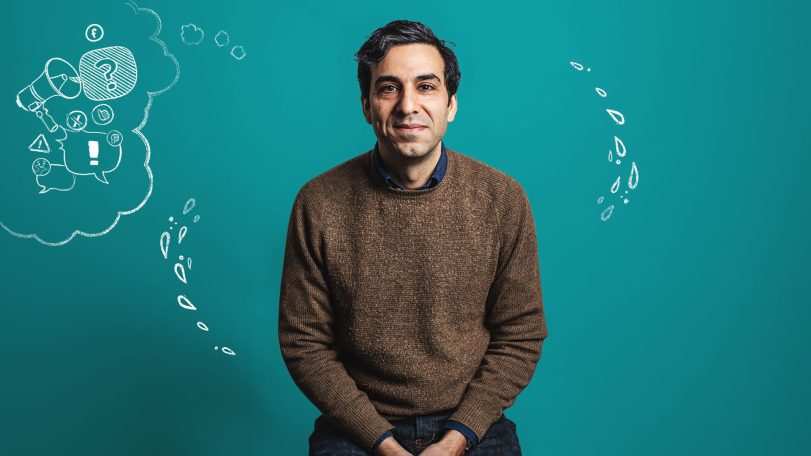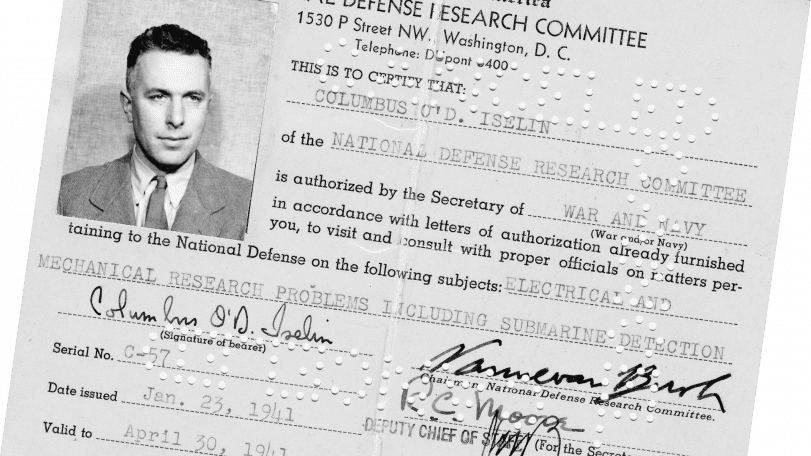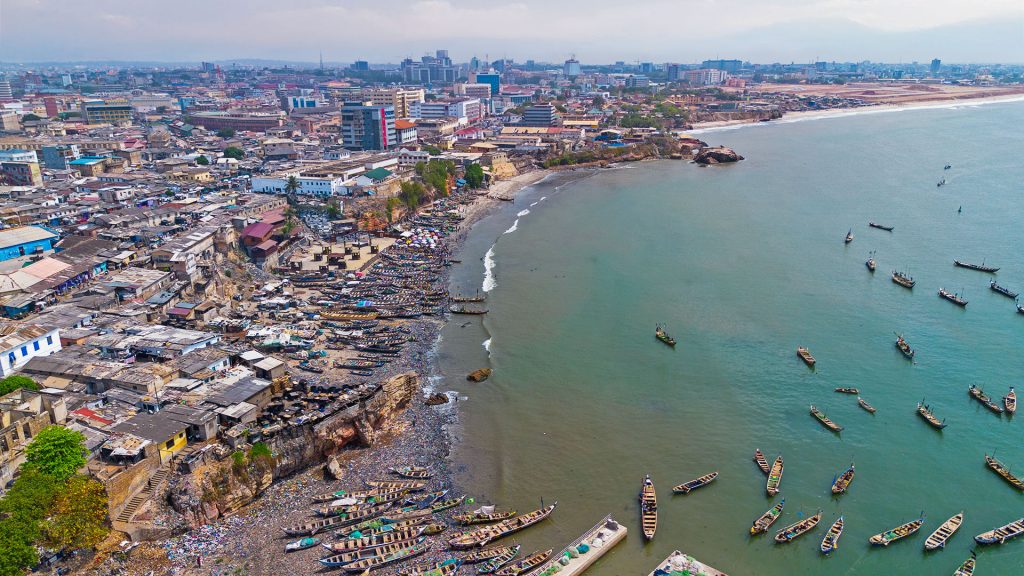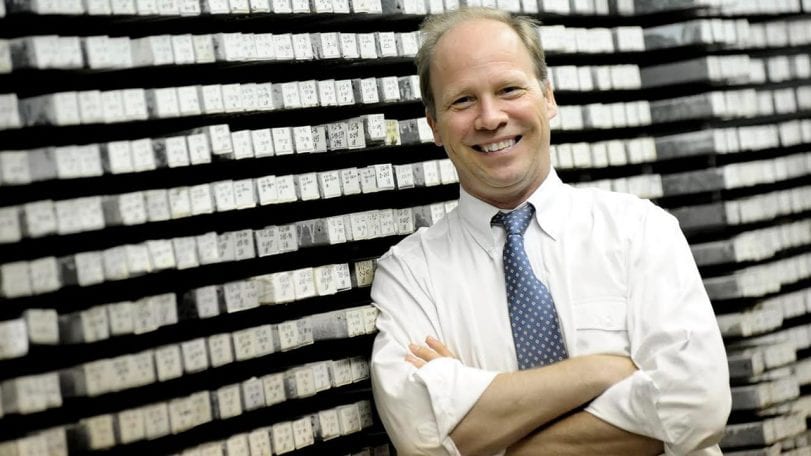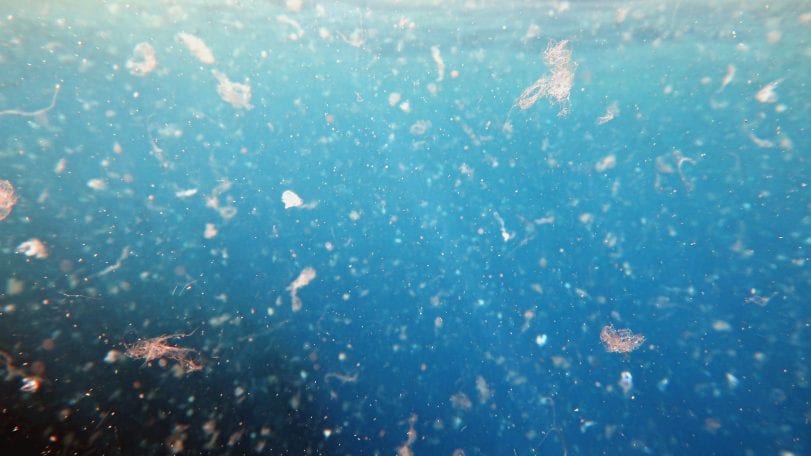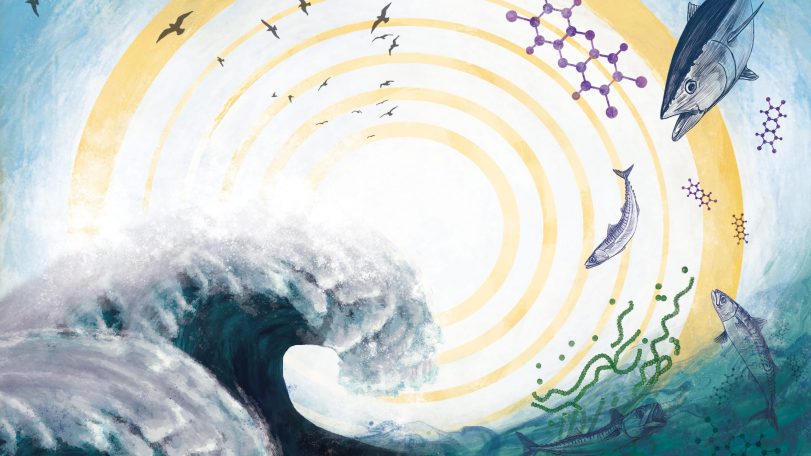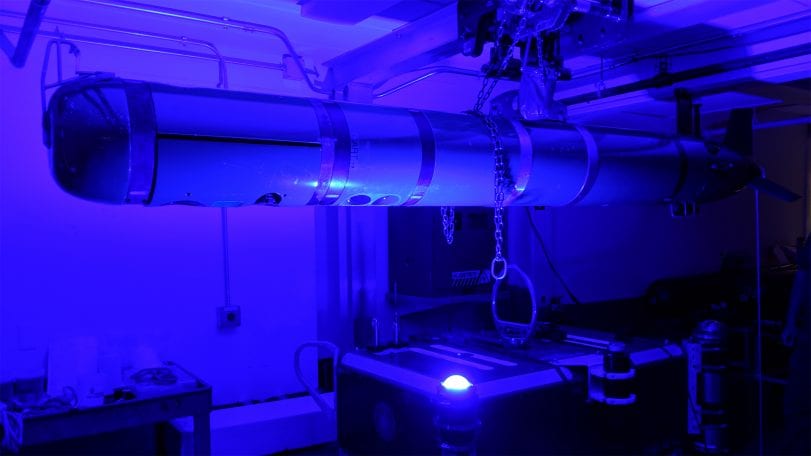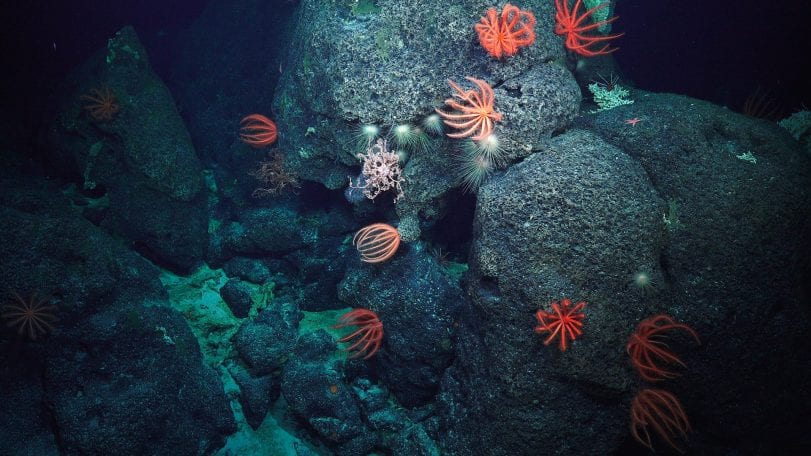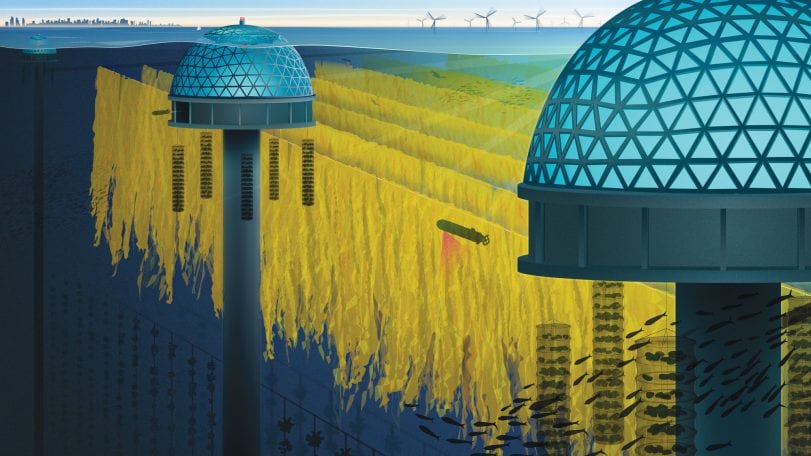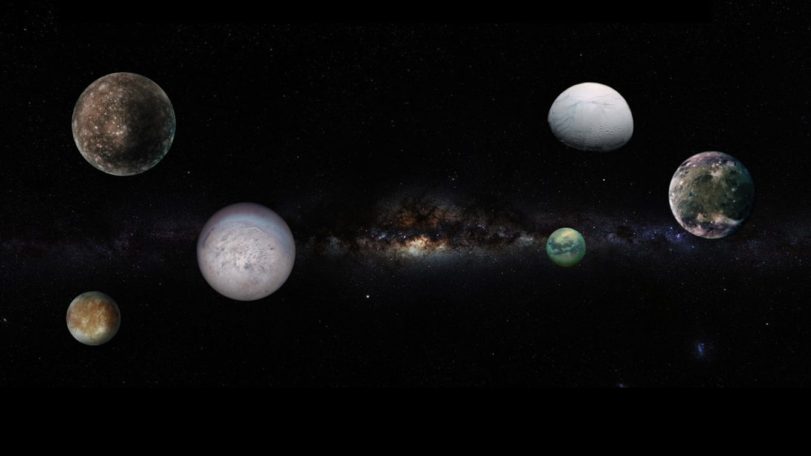
Lessons from a lifetime of exploration
Award-winning ocean photographer Brian Skerry shares insights from a career spent around ocean life and science
The little big picture
WHOI senior biologist Heidi Sosik on the critical need for long-term ocean datasets
The ocean weather nexus, explained
The vital role of ocean observations in extreme weather forecasting
Breaking down plastics together
Through a surprising and successful partnership, WHOI and Eastman scientists are reinventing what we throw away
Three questions with Carl Hartsfield
Captain Hartsfield, USN retired, discusses the role ocean science plays in our national defense

and get Oceanus delivered to your door twice a year as well as supporting WHOI's mission to further ocean science.
Our Ocean. Our Planet. Our Future.
The Ocean (Re)Imagined
How expanding our view of the ocean can unlock new possibilities for life
Body snatchers are on the hunt for mud crabs
WHOI biologist Carolyn Tepolt discusses the biological arms race between a parasite and its host
A polar stethoscope
Could the sounds of Antarctica’s ice be a new bellwether for ecosystem health in the South Pole?
Secrets from the blue mud
Microbes survive—and thrive—in caustic fluids venting from the seafloor
Top 5 ocean hitchhikers
As humans traveled and traded across the globe, they became unwitting taxis to marine colonizers
Following the Polar Code
Crew of R/V Neil Armstrong renew their commitment to Arctic science with advanced polar training
Harnessing the ocean to power transportation
WHOI scientists are part of a team working to turn seaweed into biofuel
Casting a wider net
The future of a time-honored fishing tradition in Vietnam, through the eyes of award-winning photographer Thien Nguyen Noc
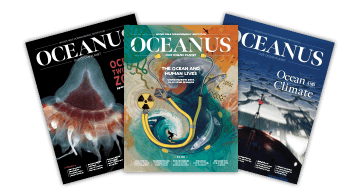
Looking for something specific?
We can help you with that. Check out our extensive conglomeration of ocean information.
Gold mining’s toxic legacy
Mercury pollution in Colombia’s Amazon threatens the Indigenous way of life
How do you solve a problem like Sargassum?
An important yet prolific seaweed with massive blooms worries scientists
Ancient seas, future insights
WHOI scientists study the paleo record to understand how the ocean will look in a warmer climate
Rising tides, resilient spirits
As surrounding seas surge, a coastal village prepares for what lies ahead
Whistle! Chirp! Squeak! What does it mean?
Avatar Alliance Foundation donation helps WHOI researcher decode dolphin communication
We can’t do this alone
For marine chemist Adam Subhas, ocean-climate solutions don’t happen without community
How WHOI helped win World War II
Key innovations that cemented ocean science’s role in national defense
Life at the margins
Scientists investigate the connections between Ghana’s land, air, sea and blue economy through the Ocean Margins Initiative
Grits, storms, and cosmic patience
As storms stall liftoff, Europa Clipper Mission Team member Elizabeth Spiers patiently awaits the biggest mission of her life
Who is Peter de Menocal? A Conversation with WHOI’s new President & Director
On October 1st, Dr. Peter de Menocal assumed the role of President & Director of Woods Hole Oceanographic Institution, the 11th person to hold that title since the Institution was founded in 1930. In a wide-ranging conversation, we meet the man and the scientist—and get a glimpse of what WHOI’s future may hold under his leadership.
WHOI establishes new fund to accelerate microplastics innovation
With the backing of a handful of family foundations, WHOI is launching a Marine Microplastics Innovation Accelerator to help answer some of the most pressing—and foundational—questions about marine microplastics and their impacts
A Sea of Hazards
How ocean scientists are working to safeguard us from the perils of a changing ocean
Putting the ‘nuclear coffin’ in perspective
WHOI chemist and marine radioactivity expert shares his thoughts about radioactivity waste leaking from Runit Dome—a bomb crater filled with radioactive soil in the Marshall Islands that is now being penetrated by rising sea levels
Experts Explore the Ocean-Human Health Link
Eleonora Van Sitteren Guest Student, Lindell Lab I work with the Lindell Lab group at…
Can seismic data mules protect us from the next big one?
Researchers look to new seafloor earthquake detection systems for better detection and warning of seismic risk
Why we explore deep-water canyons off our coast
WHOI biologist Tim Shank joins NOAA Fisheries, the National Centers for Coastal Ocean Science, the National Ocean Service, and the Mid-Atlantic Regional Council on the Ocean (MARCO) to study the ecological diversity and economic value laden in the 90 underwater canyons along the northeast U.S. continental shelf
To sail, not to drift
Navigating a changing ecosystem, funding marine science, and finding hope—WHOI Deputy Director Rick Murray charts the course toward our ocean’s future.
Sea Ahead
Once upon a time, ocean scientists hung up cans on up a tree on Bikini Atoll to measure wave height in the Marshall Islands during nuclear weapons testing. Today, ocean technologies and data harvesting are heading somewhere big, from swarming bots, to more autonomous submersibles, and the miniaturization of ocean sensors
Looking into the Future
WHOI researchers discuss various ways that ocean science and technology are enabling a deeper understanding of our blue planet
Uncharted Waters
Our global ocean will change dramatically over the next few decades. What might it look like, and how will humans adapt?
Are We Alone?
To discover life in space, we look to our ocean extremes to understand what it’s capable of withstanding. The Exploring Ocean Worlds Program brings WHOI’s marine expertise into the far reaches of our solar system.
